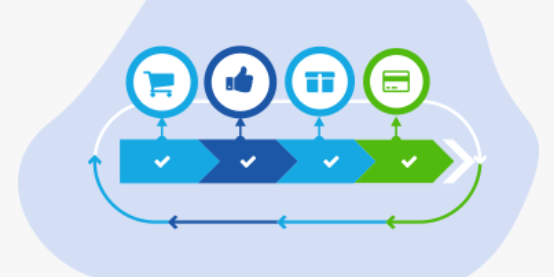- Time-Consuming — When a QAD purchase requisition is created, it most likely needs to go through a ‘manual’ approval process and chances are that it will be delayed as there is no proper ‘structure’ put in place for faster approvals.
- Lack Of Policy Compliance — Even though organizations do have a purchasing policy, it may not be enforced properly due to lack of supportive systems. This leads to the furor over organizational budgetary restrictions and losing audit and visibility on total spend.
- Human Error — Any purchase requisition processed without a proper validation could also result in the duplicate ordering of a product, unwanted or maverick purchases allowing organizations to lose control over spend.
In today’s fast-paced business world, it’s too risky to depend solely on paper forms, emails, and excel spreadsheets without a Data-Driven Approval Routing and Workflow solution, this is especially relevant for essential business processes, such as creating a QAD purchase requisition. Even the smallest mistake can cost the organization big losses and a bad reputation.
Manual process also waste more resources and time and lead to more money being spent on procurement-related activities. The worst part is that employees must spend more time chasing down paperwork instead of the things you hired them to do in the first place. With the scarcity and importance of world-class talent, wasting precious time exposes your organization to nimbler, faster competitors.
Click here to watch a short video: Benefits of Data-Driven Approval Routing and Workflow
When an organization decides to utilize the data (datapoints) from their ERP solution, such as QAD, for purchase requisitions (and other procurement processes) and carries them out through a central system they become much easier to manage. The advantages of approval routing and workflow are numerous:
- It streamlines the entire activity and thus eliminates unnecessary expenditures and fraud.
- Includes ‘Out-of-the-Box’ Real-Time Integration with your ERP system so there is seamless data flow and easy reporting.
- Good purchase requisition software helps employees plan their purchases ahead of time, makes it time efficient and reduces manual effort.
- An electronic system also speeds the overall procurement process by reducing the inter-departmental delays. This affects the overall efficiency and transparency of the business.
- Purchasers can also combine multiple orders and avail of special offers or negotiate more favorable terms.
- Automated routing gives a clear indication of who the approvers are and prevents unruly spending. Full audit control and visibility.
- A highly configurable rules based approval routing engine allows users to create the most challenging, or simple approval routing rules without any programming necessary, ensuring that key purchasing policies cannot be violated to significantly reduce maverick spend.
- Has the ability to approve a purchase requisition by line items. A user submitting a request does not have to recreate their whole submission if just one item is rejected. This again helps streamline the process of submitting and approving requests and saves the users significant time.
- Modern software can also be setup to automatically approve small purchases e.g. office supplies. No need to create bureaucracy and waste people’s time.
- The ability to ‘virtually’ see all the approvers per their request before submitting the request into the system.
- Mobile access where approvals can be reviewed and approved by the required people who may be out of the office. This will reduce the approval time from days to hours.
- and more …
How do you go about?
When an organization decides to automate their purchase requisitions (or any process for that matter) it is essential to do so in a systematic manner to make the transition smooth and easy. Here are some steps to consider:
Map out the process: Planning is the key to any transition. Instead of transitioning the entire system at one go it is helpful to go module by module, e.g. PunchOuts, Catalogs, Budgeting, Mobile, etc. Start with the most cumbersome and error prone areas of the process. It is essential to understand the existing process in detail to implement the change. Chalk out the important features, constraints, fields, etc. Decide on the look and feel of the system. Decide on a timeline for implementation.
Identify a software partner to implement the change: Choose automation tools that best fits your requirements. ISS Group offers a modern procurement automation software which is seamlessly integrated with QAD ERP….readily available for automation. It requires less technical know-how so onboarding user adoption is easy.
Create digital forms: Once the planning is done and automation software acquired, the next step is to actually design the forms. Many products provide ready to use templates that can be customized. That considerably reduces the design time. Validations should also be put in at this stage – the goal is to reduce errors and data entry.
Design the routing: Once again, pre-built purchase requisition templates can hugely speed up the process. Map out the approvers and approval levels within the ‘Approval Workflow’.
Setup dynamic behavior: Real business forms and workflows are dynamic. In this phase, you’d add business rules (corporate purchasing compliance) to match the business standards of the company. Routing, approving and rejection logic is put in place.
Testing and fixing: Thoroughly test workflows in a staging environment. Solicit user feedback using a small test user group. Put in required changes or fixes to make the process robust.
Deploy the process: At this time, you provide access to the newly automated purchase requisition workflow to authorized persons. It’s ready for use. In the initial stages, make sure to monitor the process for data routing, approval process and storage. Address any discrepancies found as quickly as possible to avoid user frustration and abandonment.
Documentation: This is an important step in which you document the actual business process and the automated process in detail. This helps preserve knowledge, serves as a handbook for newcomers and encourages continual improvements.
See how easily we can help you automate your QAD purchase requisitions, purchase orders, sales orders and other everyday QAD integrated business processes.
ISS Group offers seamless Business Process Improvement (BPI) solutions to organizations using the QAD ERP system to ensure continuity, efficiency and accuracy from remote locations. Our solutions significantly enhance QAD by automating business processes utilizing innovative ‘Data-Driven’ Approval Routing and Workflow technology. Contact us at ISS Group to learn more about improving your business processes with Data-Driven Approval Routing and Workflow and how to integrate this technology in your organization today.








